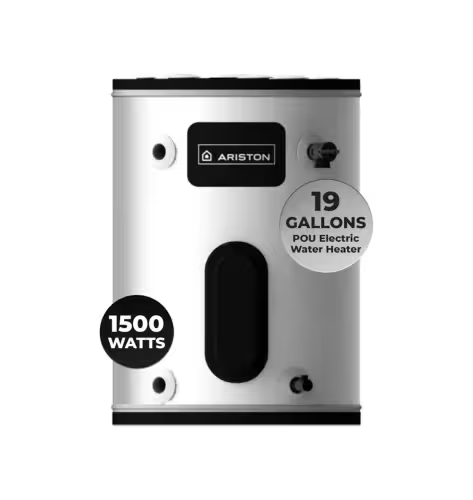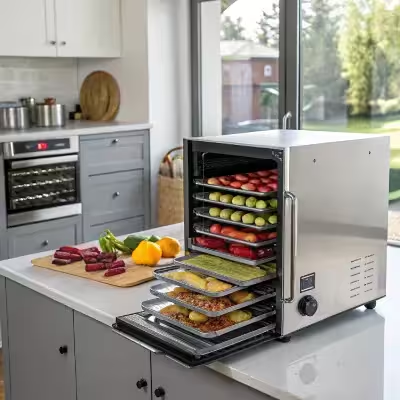The Rode NT1 is a premium condenser microphone designed for creators who demand exceptional clarity, low noise and professional-grade sound quality. Whether you’re a podcaster, voice-over artist, streamer, content creator or home studio recorder, the Rode NT1 is a reliable and high-performance choice for capturing rich and detailed audio.
Renowned for its warm and natural sound reproduction, this microphone has become a go-to option for content creators and recording professionals. In this in-depth guide, we will explore the key features, technical specifications, and best practices for using the Rode NT1 to achieve studio-quality recordings.
Why the Rode NT1 is a Top Choice for Voice Recording
1. Ultra-Low Self-Noise for Clean Recordings
One of the standout features of the Rode NT1 is its extremely low self-noise of just 5dBA. This makes it one of the quietest studio microphones available, ensuring that your recordings are crystal clear without unwanted background noise. This feature is especially beneficial for voice-over work, podcasting, and professional broadcasting, where clean audio is a must.
2. Superior Sound Quality with Extended Frequency Response
The Rode NT1 is designed to capture every nuance of the human voice with an extended frequency range of 20Hz – 20kHz. This ensures that your recordings have a full, natural, and detailed tone, making it an excellent choice for spoken-word content, narration, and vocal performances.
3. Cardioid Polar Pattern for Focused Audio Capture
With its cardioid polar pattern, the Rode NT1 focuses on the sound source directly in front of it while minimizing ambient noise and room reflections. This feature ensures that your voice recordings are isolated and free from background distractions, making it perfect for home studios and untreated recording spaces.
4. Durable and Professional Build Quality
The Rode NT1 features a rugged metal construction designed for long-lasting durability. Its nickel-plated body and sturdy internal components provide excellent resistance to wear and tear, ensuring that the microphone maintains its quality over time. This makes it a reliable option for professional use.
5. High Sensitivity for Capturing Detail
This microphone is equipped with a high-sensitivity capsule, allowing it to capture even the subtlest vocal nuances. Whether you’re recording audiobooks, podcasts, or ASMR content, the Rode NT1 delivers warm, rich, and immersive audio.
6. XLR Connectivity for High-Quality Audio
The Rode NT1 uses an XLR connection, which ensures superior sound fidelity compared to USB microphones. This means it needs to be connected to an audio interface or mixer, which enhances the overall sound quality by providing clean preamplification and precise audio control.
Technical Specifications
- Microphone Type: Large-diaphragm condenser
- Polar Pattern: Cardioid
- Frequency Response: 20Hz – 20kHz
- Self-Noise: 5dBA
- Maximum SPL: 137dB
- Output Connection: XLR
- Power Requirement: 48V Phantom Power
- Weight: 326g
- Build Material: Metal
Best Applications for the Rode NT1
1. Podcasting and Voice-Overs
The Rode NT1 is perfect for podcasters, audiobook narrators, and voice-over artists. Thanks to its low noise floor and high sensitivity, it captures clear, natural, and engaging vocals, making your content sound professional and polished.
2. Streaming and Online Content Creation
For streamers on Twitch, YouTube, and other platforms, the Rode NT1 delivers studio-grade voice clarity. Its focused pickup pattern minimizes background noise, ensuring that your audience hears every word with crisp definition.
3. Home Studio Recording
Whether you’re a singer, spoken-word artist, or content creator, the Rode NT1 is an excellent choice for studio-quality vocal recordings. Its extended frequency response allows it to capture the depth and character of any voice, making it a favorite for professional recording engineers and home studio enthusiasts.
4. ASMR and Whisper Content
With its detailed sound reproduction and high sensitivity, the Rode NT1 is a top choice for ASMR creators. It captures the softest whispers and gentle sounds with incredible detail, providing immersive and engaging listening experiences.
How to Get the Best Sound from the Rode NT1
1. Use a High-Quality Audio Interface
Since the Rode NT1 requires 48V phantom power, it needs to be connected to a reliable audio interface or mixer. Recommended options include:
- Focusrite Scarlett 2i2 (great for home studio recording)
- Behringer UMC404HD (budget-friendly option)
- Universal Audio Apollo Twin (high-end choice for professional use)
A quality interface ensures optimal gain control and cleaner signal processing, leading to better overall sound quality.
2. Position the Microphone Correctly
For best results, position the Rode NT1 about 6-8 inches from your mouth. A slight tilt can help reduce plosive sounds, and using a boom arm keeps the microphone stable and minimizes vibrations.
3. Use a Pop Filter and Shock Mount
- A pop filter reduces plosive sounds (e.g., “P” and “B” sounds) and makes recordings smoother.
- A shock mount prevents vibrations from affecting audio quality, ensuring clean and consistent recordings.
4. Optimize Your Recording Environment
Although the Rode NT1 has great noise rejection, improving your recording space can further enhance sound quality. Consider using:
- Foam panels to absorb echoes
- Heavy curtains or carpets to reduce room reflections
- A quiet space for minimal background noise
These adjustments help produce broadcast-quality recordings.
Conclusion: Is the Rode NT1 Worth It?
The Rode NT1 is an industry-leading condenser microphone that offers exceptional sound quality, ultra-low self-noise, and professional durability. Whether you’re a podcaster, voice-over artist, streamer, or home studio worker, this microphone delivers studio-grade audio performance.
Key Benefits:
✅ Ultra-low self-noise (5dBA) for clean recordings
✅ Clear and natural sound with extended frequency response
✅ Cardioid pattern minimizes background noise
✅ Durable metal construction for long-term use
✅ High sensitivity for capturing vocal details
✅ XLR connectivity for superior sound quality
For anyone looking to elevate their voice recordings, the Rode NT1 is a perfect choice. With the right setup and accessories, this microphone will help you achieve professional-quality audio for any project.
FAQs About the Rode NT1 Microphone
1. What makes the Rode NT1 a great microphone for voice recording?
The NT1 is one of the best studio microphones for voice recording because of its ultra-low self-noise (4.5dBA), high sensitivity, and extended frequency response. It delivers crystal-clear vocals, making it ideal for podcasting, voice-overs, and content creation.
2. Is the Rode NT1 good for podcasting?
Yes! The NT1 is perfect for podcasters who want broadcast-quality sound. Its cardioid polar pattern reduces background noise, ensuring that your voice comes through rich, warm, and detailed.
3. Does the Rode NT1 require phantom power?
Yes. The NT1 is a condenser microphone, meaning it requires 48V phantom power from an audio interface, mixer, or preamp to function properly.
4. How does the Rode NT1 compare to the Rode NT1-A?
The NT1 features even lower self-noise (4.5dBA vs. 5dBA on the NT1-A), making it one of the quietest studio microphones in the world. It also has a smoother frequency response, resulting in a more natural and balanced sound.
5. What is included with the Rode NT1 microphone?
When you purchase the NT1, you typically get:
- The NT1 condenser microphone
- SM6 shock mount (reduces vibrations)
- Pop filter (minimizes plosives)
- XLR cable
- Dust cover for protection
6. What audio interface works best with the Rode NT1?
Some of the best audio interfaces for the NT1 include:
- Focusrite Scarlett 2i2 (great for beginners and home studios)
- Universal Audio Apollo Twin (high-end preamps for pro-quality sound)
- Behringer UMC22 (budget-friendly option)
7. Can I use the Rode NT1 for streaming?
Yes! The NT1 is an excellent choice for live streaming on Twitch, YouTube, and Facebook Gaming. It provides studio-quality sound, making your voice clear, warm, and engaging for your audience.
8. What is the frequency response of the Rode NT1?
The NT1 has a frequency response of 20Hz – 20kHz, allowing it to capture a wide range of vocal and instrumental sounds with clarity and depth.
9. How do I connect the Rode NT1 to my computer?
To connect the NT1 to your computer, you need:
- An audio interface (such as the Focusrite Scarlett 2i2)
- An XLR cable to link the microphone to the interface
- A DAW (Digital Audio Workstation) like Audacity, Adobe Audition, or GarageBand for recording and editing
10. Can the Rode NT1 be used for ASMR recordings?
Yes! The Rode NT1’s ultra-low noise and high sensitivity make it a great choice for ASMR creators who want to capture whispers, soft sounds, and delicate audio details.
11. Is the Rode NT1 good for voice-over work?
Absolutely! The NT1 is widely used by professional voice-over artists because of its neutral, detailed, and natural sound reproduction. It ensures that dialogue is crisp, clear, and free from background noise.
12. How can I reduce background noise when using the Rode NT1?
To minimize background noise when using the NT1, follow these tips:
- Record in a quiet, treated space (use foam panels or carpets to absorb sound)
- Use a shock mount to prevent vibrations
- Position the microphone correctly (6–12 inches away from your mouth)
- Use a pop filter to reduce plosive sounds
13. What type of polar pattern does the Rode NT1 have?
The NT1 features a cardioid polar pattern, which means it picks up sound primarily from the front while rejecting noise from the sides and rear. This helps isolate your voice and reduce unwanted background noise.
14. Can the Rode NT1 be used for instrument recording?
Yes! The NT1 is excellent for recording acoustic instruments like guitars, pianos, violins, and drum overheads. Its wide frequency response and low noise make it a great option for capturing natural and rich instrumental sounds.
15. How durable is the Rode NT1?
The NT1 is built with a rugged metal body and high-quality internal components, ensuring long-lasting durability. It’s designed for years of professional use in both home and professional studios.
16. Does the Rode NT1 work with a boom arm?
Yes! The NT1 is compatible with most boom arms and mic stands. A boom arm setup helps position the microphone more effectively while keeping your workspace clutter-free.
17. What makes the Rode NT1 unique compared to other condenser microphones?
The NT1 stands out because of its:
- Ultra-low self-noise (4.5dBA) – the quietest in its class
- Smooth, neutral sound – ideal for voice recording and instruments
- High-quality build and durability
- Included accessories like a shock mount and pop filter
18. What software works best with the Rode NT1?
The NT1 works with any DAW (Digital Audio Workstation). Some recommended software includes:
- Audacity (free and beginner-friendly)
- Adobe Audition (professional audio editing)
- GarageBand (for Mac users)
- Reaper (affordable and powerful)
- Logic Pro X or Pro Tools (for professional-level recording)
19. Does the Rode NT1 work with USB adapters?
Since the NT1 uses an XLR connection, it does not work with standard USB adapters. However, you can use an XLR-to-USB interface like the Focusrite Scarlett Solo or Rode AI-1 to connect it to a computer.
20. Is the Rode NT1 worth buying?
Yes! The NT1 remains one of the best studio microphones due to its high-quality sound, low self-noise, and excellent durability. It’s a top choice for podcasters, voice-over artists, streamers, and content creators looking for professional-grade audio.
Additional Resources
For those interested in enhancing their editing skills, Audacity is a free, open-source audio editing tool widely recommended for recorders, podcasters and streamers alike. It’s crucial to explore various tutorials available on their website and other platforms, as they can help you become proficient in audio editing, mixing, and mastering techniques. Combining the right home studio setup with a best microphone (Shure SM7B, Shure MV7, Audio-technica AT2020, Rode NT1, Blue Yeti, HyperX QuadCast) for your specific needs will ensure your content stands out in an increasingly competitive digital landscape.





